California Compliant Catalytic Converters: The Ultimate Guide
30th Oct 2025
California’s strict emissions standards demand more than just any catalytic converter—they require CARB-approved solutions built for durability, efficiency, and compliance. This ultimate guide explains everything you need to know, from legal requirements and maintenance tips to choosing the right converter, ensuring your vehicle stays road-ready, environmentally responsible, and fully compliant with California emissions laws.

Understanding California Catalytic Converter Regulations
California’s approach to vehicle emissions is among the strictest in the United States. The California Air Resources Board (CARB) enforces rigorous standards for automotive parts, particularly catalytic converters. Understanding these rules is crucial for anyone driving, repairing, or upgrading their vehicle in the state.
CARB’s Role in Regulating Emissions Parts
The California Air Resources Board (CARB) sets strict air quality standards, especially for catalytic converters. Any new or replacement aftermarket converter in California must be CARB-approved and carry an Executive Order (EO) number. Without certification, aftermarket parts are considered illegal, leading to inspection failures and fines.
What These Rules Mean for Vehicle Owners
California drivers must be diligent when buying catalytic converters. While an EPA-compliant converter may work in other states, California requires parts that match the exact year, make, model, and engine size. Non-compliance risks failed registration and loss of legal driving rights.
Differences Between CARB and Federal Converters
Federal (EPA) standards allow a wider range of converters focused on durability and basic emissions control. CARB standards go further, testing for emissions reduction, longevity, and build quality. Federal converters cannot be installed in California unless they are CARB-approved and labeled for California use.
Clearing Up Misconceptions About California Standards
Many believe all new aftermarket converters pass California smog checks, but only those certified by CARB with a visible EO label are legal, unless it’s an OEM converter. Another myth is that aftermarket converters outperform OEMs without certification. In reality, no matter the brand or quality, uncertified parts remain illegal. Even premium options like Magnaflow must carry CARB certification for specific vehicles to be valid.
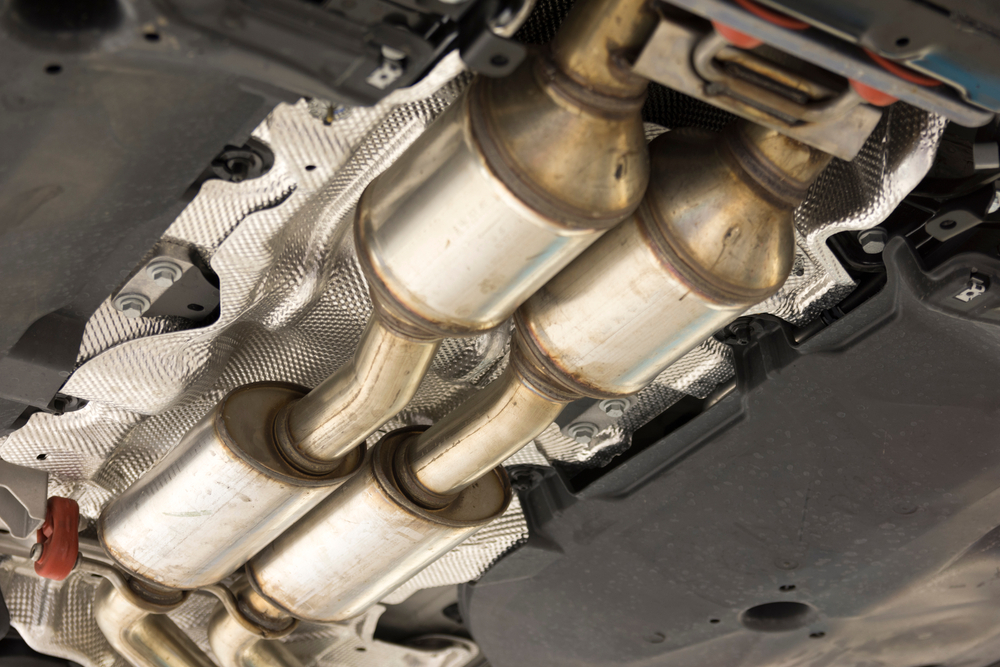
How to Identify a California Compliant Catalytic Converter
If you live in California, replacing your vehicle’s catalytic converter isn’t as simple as picking the cheapest one online. Due to strict emissions regulations enforced by the California Air Resources Board (CARB), it’s crucial to ensure you're buying a California catalytic converter that meets specific standards.
1. Look for CARB Certification Markings
The surest way to confirm if a catalytic converter is legal in California is by checking for a CARB Executive Order (EO) number. This identifier proves compliance with emissions standards and must be etched into the converter. Other required markings include the part number, date of manufacture, and directional flow arrow. All must be permanent and readable. Missing details, particularly the EO number, usually mean the unit is non-compliant, unless it’s an OEM converter, which is exempt.
What to Look For:
- CARB EO Number (e.g., D-193-140)
- Part Number
- Date of Manufacture
- Direction of Flow Arrow
2. Where to Find These Markings
Markings are usually engraved on the housing—top, bottom, or sides—often near the heat shield or inlet/outlet pipes. Look for an EO prefix like EO-D-193-57. Buyers can request the EO number before purchasing, and reputable brands like MagnaFlow provide this clearly in listings.
3. Tips for Verifying Compliance When Purchasing
Not all “EPA-compliant” converters qualify in California. Buyers must confirm CARB compliance by checking the EO number in the CARB Aftermarket Parts Database. Many websites also allow filters for “California” or “CARB Compliant” listings. Fitment must be exact, matching the vehicle’s make, model, year, engine size, and test group.
How to Verify:
- Check the EO number in CARB’s database
- Filter by “CARB Compliant” when shopping online
- Confirm exact fitment with your vehicle’s specifications

4. Avoiding Non-Compliant or Counterfeit Converters
Fake or non-compliant converters are common, particularly online, and can result in smog check failures or fines.
How to Avoid Scams:
- Avoid suspiciously low prices—CARB converters cost more due to testing.
- Buy from trusted brands like MagnaFlow and authorized dealers.
- Insist on an EO number and verify it independently through CARB.
Why It Matters
California enforces the country’s strictest emissions laws. Using non-compliant converters harms the environment, causes failed inspections, and risks registration denial. Spending a few minutes to verify CARB certification ensures legality, protects air quality, and prevents costly penalties.

Top 4 Benefits of Using a CARB-Compliant Catalytic Converter
In our increasingly environmentally aware society, maintaining your vehicle's compliance with emission standards has taken on significant importance. This is particularly true for California drivers, where regulations are notably stringent, making the use of a California-compliant catalytic converter a necessity.
Opting for a CARB-compliant catalytic converter not only ensures your vehicle adheres to legal requirements but also actively contributes to a healthier environment. Here are the top 4 benefits you can get from purchasing a catalytic converter for your California vehicle.
Ensuring Legal Compliance and Avoiding Penalties
Driving without a CARB-compliant catalytic converter in California can result in fines, failed emissions tests, and registration problems. CARB certification ensures the part meets strict state emission standards, protecting drivers from costly repairs and legal issues. Choosing a certified converter keeps vehicles road-legal and aligned with California’s environmental regulations.
Contributing to Cleaner Air and Environmental Protection
California struggles with smog and pollution from its dense traffic. CARB-compliant converters reduce harmful pollutants such as nitrogen oxides, hydrocarbons, and carbon monoxide, helping improve air quality and public health. While EPA standards set the federal baseline, CARB goes further, offering stronger protection against emissions. For eco-conscious drivers nationwide, using a CARB-certified converter supports cleaner air well beyond California.
Maintaining Optimal Vehicle Performance and Fuel Efficiency
Contrary to popular belief, stricter emission controls do not reduce engine power. CARB-compliant converters are designed to work with modern engines, often preserving or even improving performance and fuel efficiency. Selecting the right converter—both CARB-certified and vehicle-specific—ensures efficient operation and better mileage while staying compliant with regulations.
Potential Impact on Vehicle Resale Value
Having a CARB-compliant converter increases resale value, especially in California, where compliance is mandatory. Buyers and dealerships prefer vehicles that pass emissions testing without issues. Documentation showing a CARB-certified converter, such as one from Magnaflow, also reassures buyers that the vehicle is well-maintained and less likely to require emissions-related repairs.
Choosing the Right CARB-Compliant Converter Matters
Investing in a CARB-compliant catalytic converter goes beyond meeting legal requirements. It safeguards air quality, sustains performance, supports resale value, and keeps vehicles road-ready. Purchasing from trusted suppliers ensures you receive a certified product tailored to your vehicle’s needs.
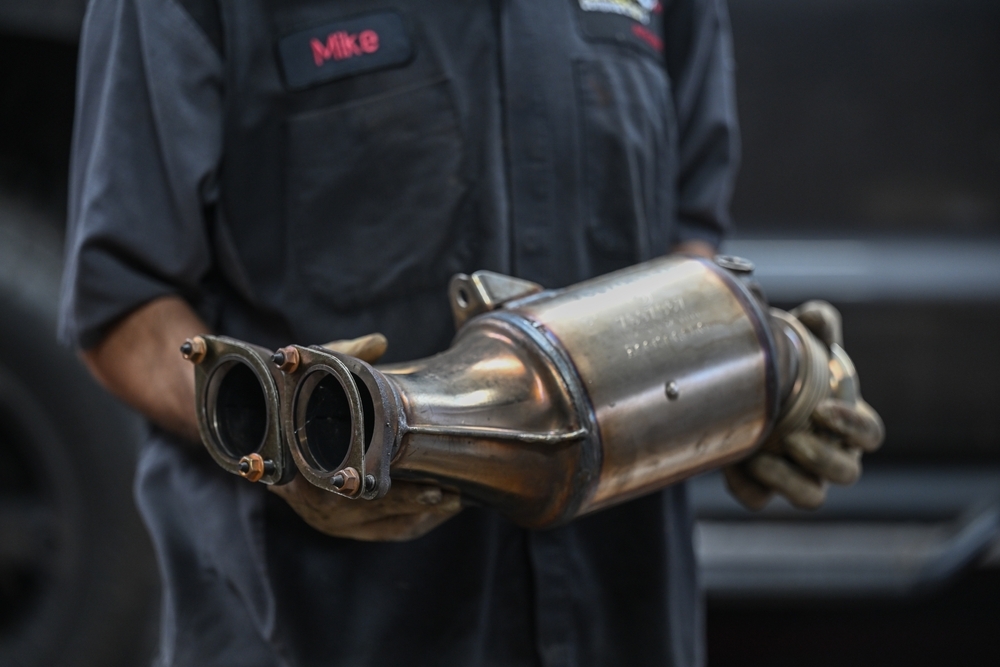
When Do You Need to Replace Your Catalytic Converter in California?
A California legal catalytic converter plays a vital role in controlling emissions and ensuring your vehicle meets the state's environmental standards. Over time, this component may fail, leading to engine problems, failed emissions tests, and legal issues. Recognizing the signs early can save you time, money, and headaches.
Common Warning Signs of a Faulty California-Approved Catalytic Converter
Vehicles usually show clear indicators when a catalytic converter is starting to malfunction. Paying attention to these signals can help prevent more serious engine or compliance issues.
Decline in Engine Power
If your car feels sluggish, accelerates slowly, or struggles on steep roads, the converter could be clogged. Restricted exhaust flow reduces performance and makes everyday driving more difficult.
Drop in Fuel Efficiency
When the converter isn’t working properly, exhaust gases don’t flow as they should. This forces the engine to burn more fuel, leading to noticeably higher fuel consumption over time.
Rattling Sounds Beneath the Vehicle
Hearing a metallic rattling when you start your car or while driving can mean the converter’s internal components have broken loose. This is a strong sign that replacement may be needed soon.
Failing a Smog Check
In California, an unsuccessful emissions test is often linked to catalytic converter issues. If your vehicle doesn’t pass, it may require a new CARB-compliant converter to stay road-legal and environmentally responsible.
What Causes Catalytic Converter Failure?
Knowing the main causes of catalytic converter failure helps vehicle owners extend the life of this essential component and avoid expensive replacements.
Engine Misfires or Excess Fuel
When misfires occur, unburned fuel can enter the converter. This fuel may ignite, causing excessive heat that damages the honeycomb substrate and shortens its lifespan.
Oil or Coolant Leaks
If oil or coolant enters the combustion chamber, it can coat the catalyst surface, reducing its ability to clean exhaust gases effectively.
Physical Damage or Rust
Road debris, impact, or corrosion can harm the converter’s shell or internal structure, resulting in reduced efficiency.
Age and High Mileage
Over time, catalytic converters wear out naturally. Vehicles with more than 100,000 miles are particularly at risk, especially if regular maintenance has been neglected.
Why Timely Replacement Matters
Replacing a failing converter promptly prevents more severe problems and ensures compliance with California law.
Protecting the Engine and Exhaust System
A blocked or damaged converter raises backpressure, which stresses the engine and can lead to costly exhaust system repairs.
Staying Compliant with California Regulations
The California Air Resources Board (CARB) requires converters with approved Executive Orders (EO). Installing non-compliant parts is illegal and may result in fines.
Avoiding Smog Test Failures
A faulty converter can cause your vehicle to fail emissions tests, leading to registration delays or restrictions. Early replacement ensures your car stays road-legal.
How Long Does a Catalytic Converter Last in California?
Average Lifespan
Most converters last between 70,000 and 100,000 miles. CARB-approved aftermarket converters typically include a 5-year/50,000-mile warranty.
Driving Habits and Maintenance
Frequent short trips, poor fuel, or lack of maintenance can shorten the lifespan. Issues like misfires should be fixed quickly, as they speed up converter wear. Certain fuel additives, such as MMT or high-sulfur blends, can also cause premature failure.
Diagnostic Tools
Vehicles from 1996 and newer feature onboard diagnostics, where codes like P0420 (Bank 1) or P0430 (Bank 2) signal efficiency problems. Older models may require manual inspections.
Best Options for Replacement
Benefits of Magnaflow Exhaust Systems
Magnaflow converters are engineered for durability and performance, meeting or exceeding CARB standards. They’re widely trusted for reliability and compliance.
Where to Purchase Legal Converters
Always choose converters certified for your vehicle’s year, engine size, and weight. Check the emissions tag under the hood and confirm compliance through the CARB database. This ensures legality in California and other CARB-regulated states such as New York and Colorado.

Choosing the Right California Catalytic Converter for Your Vehicle
When it's time to replace your California legal catalytic converter, making the right choice is crucial to staying compliant with state laws and protecting your vehicle's performance. Unlike standard replacements, California converters must meet strict Air Resources Board (CARB) regulations.
Why Vehicle Compatibility Matters for Emissions Compliance
California enforces some of the most demanding emissions laws in the U.S., meaning not all catalytic converters are legal for installation. To comply with CARB Executive Orders, the converter must precisely match your vehicle’s make, model, year, weight, and engine size. Compatibility ensures the converter integrates properly with the onboard diagnostics system and reduces emissions to the approved standard. Using the wrong unit could result in failed inspections, registration problems, and fines.
Types of California Legal Catalytic Converters Explained
There are two primary CARB-approved converter types. Direct-fit converters are designed to bolt in with minimal modification, while universal converters require custom installation. Regardless of type, each converter carries an Executive Order (EO) number verifying CARB certification. This number proves the converter has passed testing and complies with state and federal emissions laws. Always confirm the EO number matches your vehicle’s requirements before purchasing.
Factors to Consider Before You Buy a Catalytic Converter
Price often influences buying decisions, but with California converters, certification, warranty, and brand reputation matter more. A low-cost part without a CARB EO number is not legal in California. Instead, choose a converter backed by a reliable warranty and manufactured by a trusted brand with a record of compliance and durability.
How to Match the Correct Part Number to Your Vehicle
Finding the right converter goes beyond knowing engine size or vehicle weight. You’ll need to reference the emissions label under the hood, which lists the emissions family or test group number. This detail identifies which EO-approved parts are legal for your car. Once you have that, use manufacturer catalogs or websites to locate the correct part number. This step is especially important for 1996 and newer vehicles with onboard diagnostics, though older models also require accurate matching.
Benefits of Choosing a Magnaflow Exhaust System Upgrade
Magnaflow is a respected brand for CARB-compliant converters. Their direct-fit products are built for performance, longevity, and seamless installation. Choosing Magnaflow helps ensure proper emissions control without sacrificing engine efficiency, giving drivers both compliance and reliability.
Where to Buy Catalytic Converter Replacements in California
Drivers should purchase only from authorized local auto parts retailers or reputable online suppliers specializing in CARB-approved products. Always verify the EO number before completing a purchase, and rely on sellers that provide support in confirming the correct fit for your vehicle.
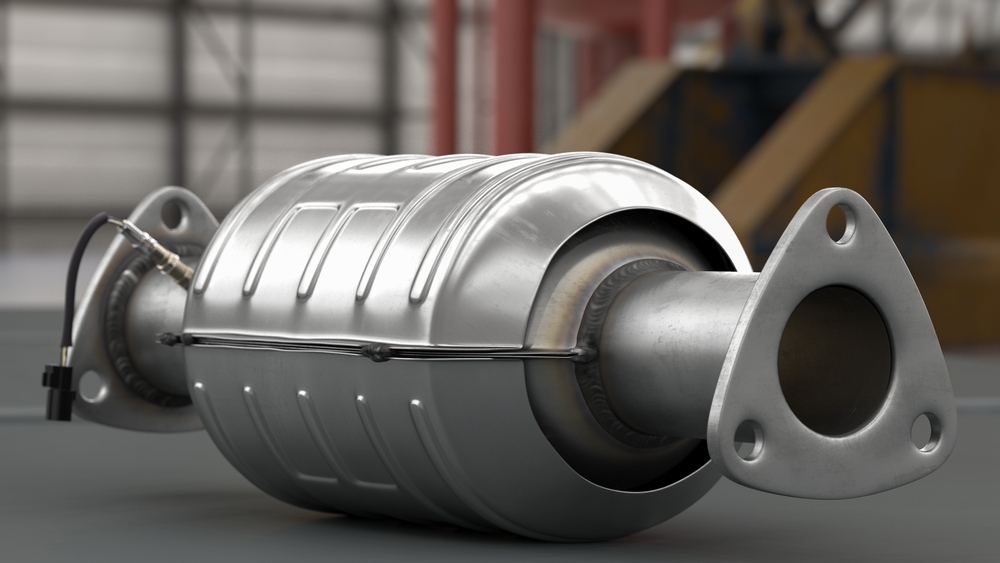
How Much Does a CARB-Compliant Catalytic Converter Cost?
If you live in California and need to replace your catalytic converter, it's important to know that not just any converter will do. The state has some of the most stringent emissions regulations in the country, and that means your replacement must be CARB-compliant—certified by the California Air Resources Board. But how much should you expect to pay for a California legal catalytic converter?
Why Vehicle Compatibility Matters for Emissions Compliance
California’s strict emissions regulations require that catalytic converters comply with CARB’s Executive Orders. This means the converter installed must match not only the vehicle’s make, model, and year but also its weight and engine size. Compatibility is more than ensuring a physical fit; it’s about guaranteeing the unit functions with the vehicle’s onboard diagnostics system and emissions standards. Installing an incorrect or non-compliant converter can lead to failed smog inspections, fines, and even registration denial.
Types of California Legal Catalytic Converters Explained
CARB-approved converters fall into two main categories. Direct-Fit Converters are designed to install easily by bolting directly into the existing exhaust system. Universal Converters can also be legal, but usually require custom work to fit properly. Each approved unit carries an Executive Order number confirming compliance with CARB and EPA rules. Before purchase, the EO number must be checked to ensure it is certified for the specific vehicle.
Factors to Consider Before You Buy a Catalytic Converter
When purchasing a replacement, certification should always take priority over cost. While price matters, a part without a CARB EO number cannot legally be used in California. Brand reputation, warranty coverage, and proven compliance are key factors. Choosing a converter backed by a solid warranty and built by a trusted manufacturer provides reliability, durability, and peace of mind.
How to Match the Correct Part Number to Your Vehicle
Simply matching a converter to a vehicle’s weight or engine size is not enough. The emissions tag under the hood provides crucial information, including the emissions family, which determines which EO-certified parts are legal. With this detail, a catalog or manufacturer website can provide the exact part number. For vehicles made in 1996 or later, onboard diagnostics help confirm compatibility, while older models rely on manual checks or visual inspection.

Benefits of Choosing a Magnaflow Exhaust System Upgrade
Magnaflow is one of the most reliable brands for CARB-compliant catalytic converters. Their exhaust systems are designed for both long-term durability and strong performance. Direct-fit designs make installation easier while ensuring emissions compliance. Drivers gain the assurance that their vehicle remains legal without compromising efficiency or drivability.
Where to Buy Catalytic Converter Replacements in California
Purchasing should always be done through reputable auto parts stores or verified online retailers specializing in CARB-approved products. EO numbers must be listed and verified before purchase to avoid mistakes. Many trusted sellers also provide customer service support to confirm the right fit based on year, model, and emissions family.
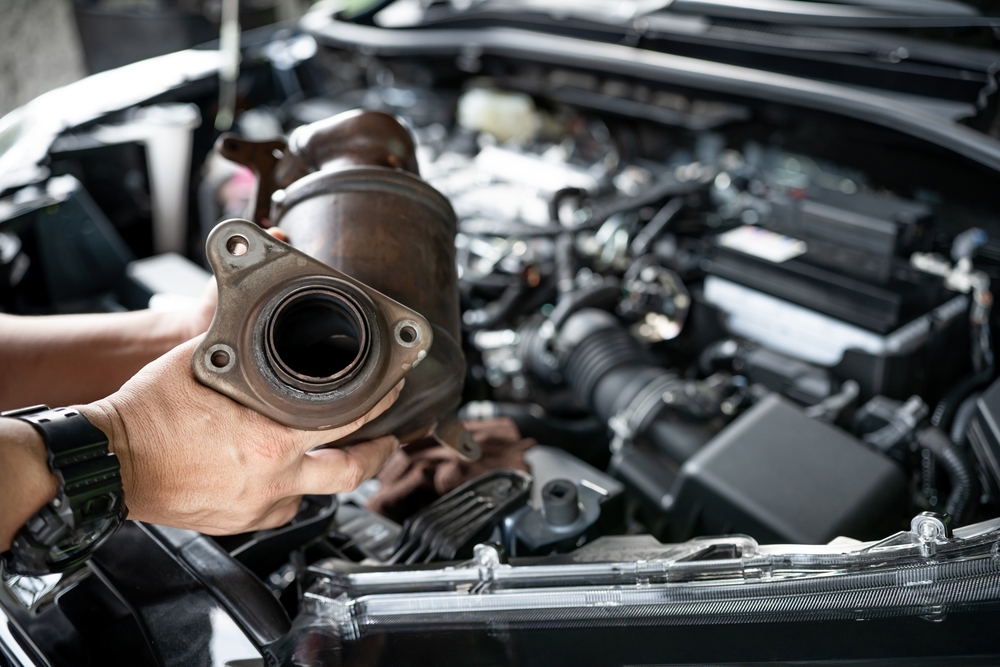
Protecting Your California Catalytic Converter from Theft
If you own a California catalytic converter, you probably know they’re a prime target for theft. California has become a hotspot for these crimes, making it essential to understand why they occur, how to protect your vehicle, what steps to take if your converter is stolen, and how to choose a legal, high-quality replacement.
Why California is a Target for Catalytic Converter Theft
- Large Vehicle Population: More cars mean more opportunities for criminals.
- CARB Regulations: California requires CARB-approved converters, which are more expensive, increasing demand in black markets.
- Quick Profits: Thieves can remove a converter in just minutes and sell the metals for hundreds or even thousands of dollars.
How to Protect Your Vehicle from Theft
Vehicle owners can take several preventative measures to safeguard their converters:
- Install a Shield or Cage: Protective metal coverings make it harder for thieves to remove the converter.
- Park in Well-Lit or Secured Areas: Visibility discourages theft.
- Etch or Engrave the Converter: Marking with a VIN or license plate number makes resale harder.
- Install an Alarm System: Sensors that detect vibration or cutting can scare away thieves.
- Regular Inspections: Mechanics can spot tampering early if theft attempts occur.
What to Do if Your Converter is Stolen
If you become a victim of catalytic converter theft:
- File a Police Report: This documentation is often required for insurance claims.
- Contact Your Insurance Company: Comprehensive coverage may help cover replacement costs.
- Avoid Driving if Unsafe: A missing converter can cause loud exhaust noise and may damage your vehicle if left unattended.
- Replace with a CARB-Compliant Converter: Ensure your replacement meets California emissions laws to avoid fines and failed smog tests.
Choosing a Legal, High-Quality Replacement
In California, only CARB-approved converters are legal for installation. When purchasing an aftermarket replacement, confirm that it has an Executive Order (EO) number matching your vehicle’s make, model, year, weight, and emissions family.
Key considerations when buying:
- Certification: Verify the EO number with CARB’s database.
- Brand Reputation: Choose trusted manufacturers like Magnaflow.
- Warranty: Look for converters backed by strong coverage.
- Fitment: Ensure the unit matches your vehicle’s specifications exactly.
Why It Matters
Failing to replace a stolen converter with a legal part can lead to failed smog tests, registration issues, and fines. Using a CARB-certified converter not only ensures compliance but also supports cleaner air and better engine performance.

Understanding CARB Executive Orders (EOs) for Catalytic Converters
When it comes to vehicle emissions in California, few components are more critical than the catalytic converter—and few regulations more important than the CARB Executive Orders (EOs) that govern them. Whether you're replacing a converter or ensuring compliance with California emissions laws, understanding CARB EOs is essential.
What Are CARB Executive Orders?
The California Air Resources Board (CARB) regulates emissions standards across the state. One of its key tools is the Executive Order (EO). When a manufacturer wants to sell an aftermarket catalytic converter in California, the part must undergo CARB testing and approval. If it passes, it is assigned an EO number that certifies it is legal for installation in California. Without this number, the part cannot be used on a registered vehicle in the state, except for OEM converters that follow a separate process.
Why CARB EOs Matter
CARB EOs directly affect vehicle owners and repair shops in several important ways:
- Registration and Inspections: Non-approved converters can cause failed emissions tests and prevent registration renewal.
- Legal Compliance: Using a non-CARB-certified converter violates state law and can lead to fines.
- Environmental Protection: These requirements reduce harmful pollutants and support California’s strict clean-air goals.
In short, using the right EO-certified converter is essential for legal compliance, proper vehicle function, and protecting the environment.
How to Find and Interpret the EO Number
CARB-approved converters include a label or plate with the EO number. This alphanumeric code is proof of legality.
EO Number Format
A typical number, like D-193-140, includes:
- “D” for emissions-related device.
- Manufacturer’s ID number.
- The Executive Order number specific to the product line.
This EO can be checked on the CARB website or other trusted sources.
Matching EOs to Vehicle Applications
It’s not enough for a converter to have an EO. The number must also match your vehicle’s specifications, including:
- Make, model, and engine size.
- Installation details (such as position on the vehicle).
- Emissions certification type or Test Group number.
Installing the wrong EO-approved part can still result in non-compliance.
Implications of Different EO Numbers
EO numbers can change over time. Some are valid only for certain designs or specific years. Older EOs may no longer apply to newer vehicles. In some cases, CARB can revoke approval, making those parts illegal for future use. Staying updated with EO listings is especially important for repair shops and suppliers.
Where to Look Up CARB EO Information
There are reliable sources for verifying EO numbers:
- CARB Aftermarket Parts Database: Search by EO, part number, or manufacturer.
- Manufacturer Websites: Brands like MagnaFlow and Walker provide searchable EO tools.
- Smog Check Facilities: Licensed shops can confirm compliance during inspections.
Staying Compliant with California Emissions Laws
To stay compliant, always install CARB-approved converters specifically listed for your vehicle. Keep EO documentation or labels available for inspections, and avoid uncertified sellers. When in doubt, consult a technician or smog check professional.
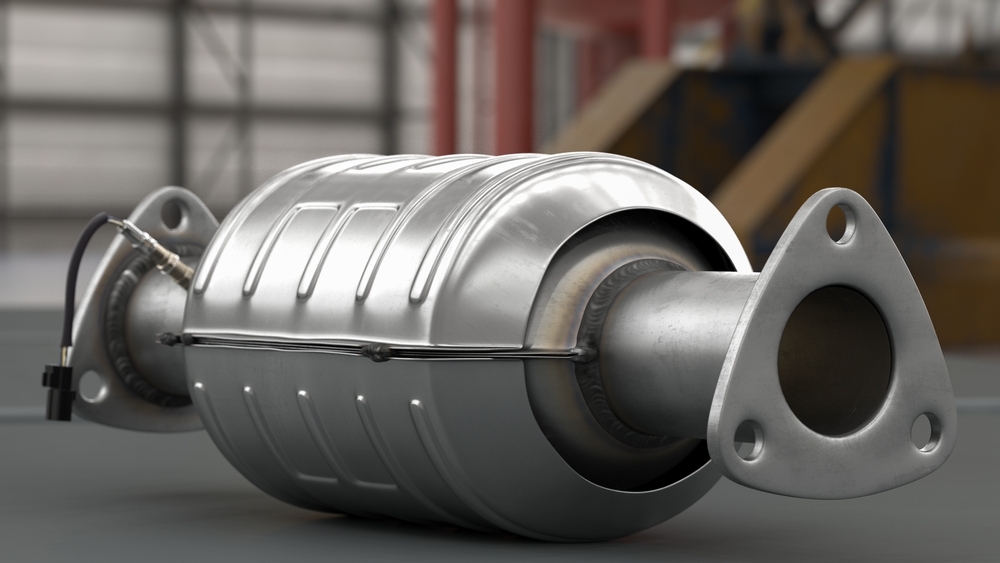
The Environmental Impact of Non-Compliant Catalytic Converters in California
In California, where clean air is both a priority and a challenge, California emissions catalytic converter standards play a crucial role in maintaining air quality. Yet, many vehicles still operate with faulty or non-compliant converters, contributing to rising pollution levels across the state.
The Hidden Dangers of Faulty or Non-Compliant Catalytic Converters
Catalytic converters filter harmful emissions such as carbon monoxide, nitrogen oxides, and hydrocarbons. When damaged, outdated, or removed, they release several times more pollutants than compliant units. This worsens urban air quality and increases risks of respiratory illness, heart problems, and even cancer. The danger extends beyond drivers, threatening entire communities.
How CARB Regulations Help Protect California’s Air
The California Air Resources Board (CARB) enforces strict standards requiring converters to pass rigorous testing before approval. Only CARB-certified units can be legally sold or installed. These rules block substandard parts and reduce harmful emissions, holding manufacturers, repair shops, and drivers accountable. CARB’s work is central to improving air quality and advancing sustainable transportation.
Catalytic Converters and Their Role in Smog Reduction
Smog forms when sunlight reacts with pollutants, creating hazy skies and poor breathing conditions. Catalytic converters help prevent this by converting toxic gases into carbon dioxide and water vapor. Their role is vital for meeting federal air quality standards and reducing smog alerts in California’s most polluted regions.
Why Individual Vehicle Choices Matter
Each driver’s actions have an impact. Skipping inspections, delaying repairs, or installing illegal parts undermines emissions progress. Even a single faulty converter can offset environmental gains. Choosing CARB-approved replacements and maintaining systems properly ensures cleaner air and supports community health.
The Cost of Non-Compliance on Communities and Ecosystems
Non-compliance harms both people and the environment. Pollutants seep into soil and waterways, damaging crops, wildlife, and ecosystems. Vulnerable groups—children, the elderly, and those with health conditions—face heightened risks from toxic air. Economically, the toll includes rising healthcare costs and greater government spending on monitoring and enforcement. Compliance isn’t only about law—it’s essential for public health, environmental protection, and California’s long-term economic resilience.

Can You Use an Aftermarket Catalytic Converter in California?
California is known for having some of the strictest vehicle emissions laws in the country, and one of the components most affected by these regulations is the catalytic converter. If your catalytic converter fails, you might be considering an aftermarket replacement. But can you use an aftermarket catalytic converter in California?
Understanding California’s Emissions Laws
California sets its own vehicle emissions standards through the California Air Resources Board (CARB), which are stricter than federal EPA rules. Any part affecting emissions, including catalytic converters, must be CARB-approved to be legally sold or installed in the state. Simply meeting EPA standards is not enough—only converters with CARB approval qualify.
What Makes an Aftermarket Catalytic Converter CARB-Compliant?
For an aftermarket converter to be California-approved, it must:
- Carry a CARB Executive Order (EO) number.
- Be designed for the exact make, model, and year of the vehicle.
- Match OEM design standards for efficiency and emissions control.
- Be installed according to CARB regulations.
The EO number should be engraved on the part itself. OEM converters are exempt, but aftermarket ones without EO numbers are illegal in California, even if sold online or at auto parts stores.
Performance and Longevity of Aftermarket Options
CARB-compliant converters undergo extensive testing for durability, emissions control, and fitment. Many aftermarket units equal or surpass OEM standards, offering:
- Effective emissions reduction.
- Minimum warranties of 5 years or 50,000 miles.
- Proper compatibility with the specified vehicle.
Though they may cost more than non-compliant alternatives, they provide long-term reliability and peace of mind under California law.
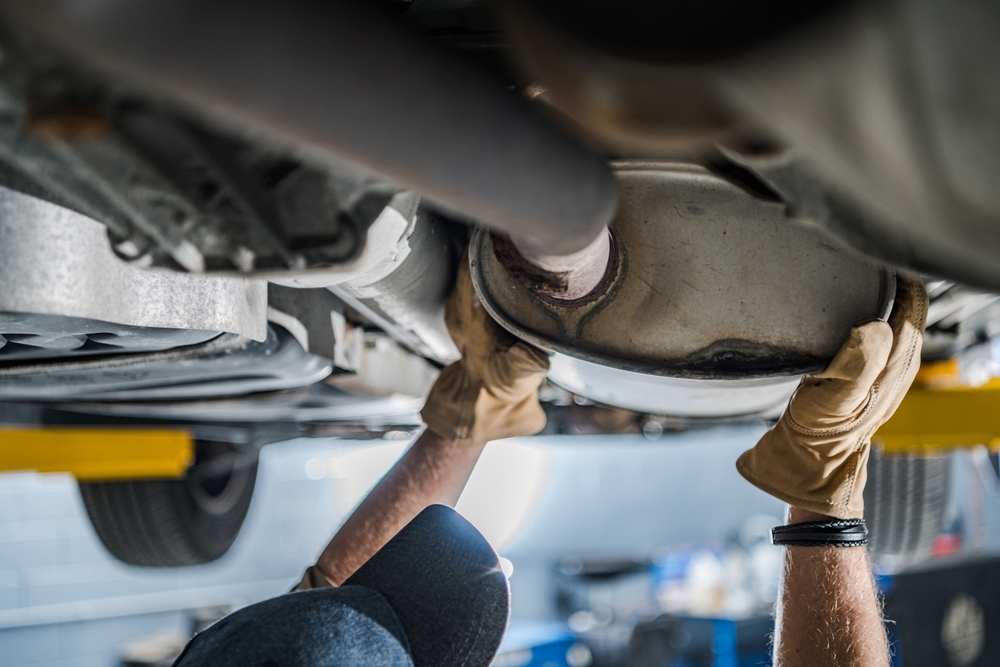
How to Choose a Legal and Reliable Aftermarket Catalytic Converter
To ensure compliance, drivers should:
- Verify CARB Compliance – Confirm the EO number and check its validity for the vehicle on CARB’s website.
- Buy from Trusted Retailers – Use reputable sellers such as HottExhaust that clearly list compliance information.
- Match the Test Group/EFN Number – Cross-check the number on the emissions sticker with catalog data for exact fitment.
- Avoid “49-State” Converters – Only converters labeled “50-state legal” or “California legal“ with a CARB EO are permitted in California.
Why It’s Worth Following the Rules
Non-compliant converters can lead to failed smog checks, DMV citations, costly replacements, or voided warranties. Choosing a CARB-approved converter keeps vehicles legal, roadworthy, and environmentally responsible. It ensures smoother operation, emissions compliance, and long-term protection for both drivers and California’s air quality.

Catalytic Converter Warranties in California: What You Need to Know
A California catalytic converter warranty is more than a guarantee—it’s a safeguard for your vehicle’s emissions system and overall performance. Whether you're replacing an OEM converter or installing an aftermarket one, understanding your warranty rights can help you avoid costly mistakes and ensure compliance with strict state regulations.
Why Catalytic Converter Warranties Matter in California
California enforces some of the toughest emissions rules in the nation through the California Air Resources Board (CARB). Since catalytic converters are essential for controlling pollutants, warranties provide peace of mind that the part will perform as expected. If a converter fails prematurely, a valid warranty ensures you aren’t left covering the cost—provided the unit is CARB-compliant.
Are Catalytic Converters Covered Under Warranty?
Yes, but coverage terms differ. Federal law requires catalytic converters and other emissions-related parts to be covered for 8 years or 80,000 miles. California regulations go further, requiring aftermarket CARB-compliant converters to carry at least a 5-year or 50,000-mile warranty. Vehicle owners should confirm compliance with both standards when purchasing replacements.
Types of Warranties for Catalytic Converters
There are two common types of warranties:
- OEM Federal Warranty: Covers new vehicles for 8 years/80,000 miles by law.
- Aftermarket or Manufacturer Warranty: Typically ranges from 2–5 years and may vary in labor, coverage, or conditions.
What’s Typically Covered Under a Warranty
Most catalytic converter warranties include:
- Defects in materials or workmanship.
- Premature failure during normal use.
- Compatibility with emissions systems (for CARB-approved units).
Labor may not always be included, but CARB-certified converters in California are generally protected against early failure.
What Can Void a Catalytic Converter Warranty
Coverage may be denied if issues such as these occur:
- Improper installation or incompatible parts.
- Tampering with emissions systems.
- Engine issues like misfires or leaks damaging the unit.
- Use of non-approved fuel or modifications.
- Ignoring required maintenance.
A voided warranty can leave owners paying the full replacement cost, which is significant in California.
How to Make the Most of Your Warranty Coverage
To keep coverage intact:
- Register the product if required.
- Save receipts, warranty cards, and installation records.
- Use professional installation.
- Address engine issues quickly and follow service guidelines.
Why Buying from a Reputable Seller Matters
Trusted sellers such as HottExhaust provide:
- Verified CARB-compliant parts.
- Clear warranty details and customer support.
- Guidance on installation and emissions compliance.
Avoid uncertified or low-cost parts from unreliable sources, as non-CARB converters are illegal in California and can result in smog test failure, fines, and costly reinstallation.
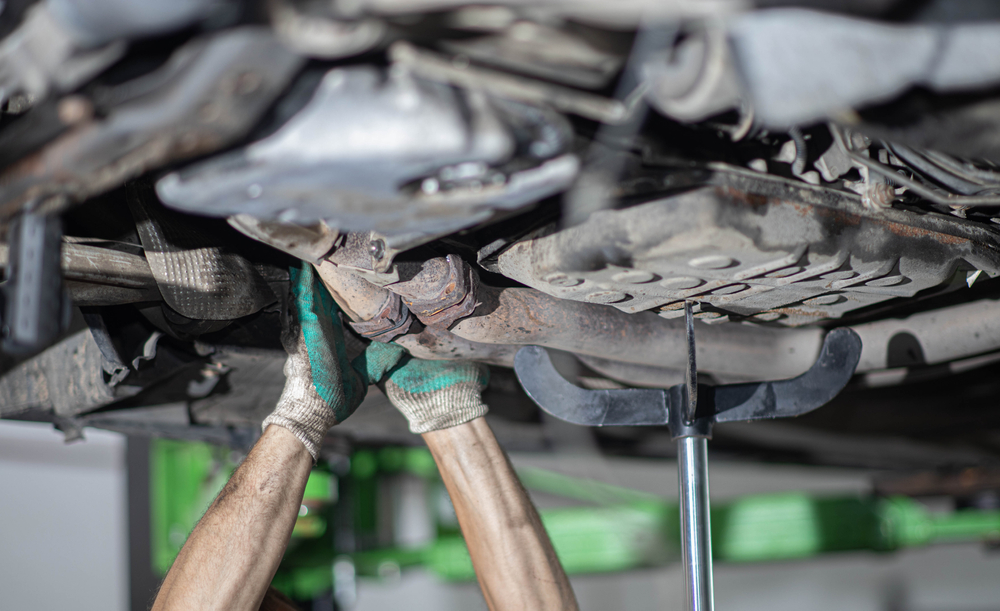
Troubleshooting Common Catalytic Converter Issues in California
Your vehicle’s catalytic converter is a critical component in keeping emissions low and maintaining compliance with California’s strict environmental standards. When this part begins to fail, it not only impacts your car’s performance but can also prevent it from passing smog checks. Understanding how to spot issues, when to consider a catalytic converter replacement, and what steps to take next is key for any California driver.
When to Replace a Catalytic Converter
Knowing when to replace a catalytic converter is critical for maintaining performance and emissions compliance. Common warning signs include reduced engine power, poor fuel economy, sulfur-like exhaust odors, or rattling noises caused by broken internal honeycomb components. Because these issues can mimic other mechanical problems, accurate troubleshooting is important.
Common Diagnostic Trouble Codes (DTCs)
Modern vehicles use OBD-II systems to monitor emissions. When the check engine light activates, scanning with a code reader may reveal converter-related issues. The most frequent codes include:
- P0420 – Catalyst system efficiency below threshold (Bank 1)
- P0430 – Catalyst system efficiency below threshold (Bank 2)
- P0421 – Warm-up catalyst efficiency below threshold
- P0431 – Warm-up catalyst efficiency below threshold
While oxygen sensor problems or exhaust leaks can sometimes cause these codes, repeated errors usually signal catalytic converter failure.
DIY Checks You Can Perform Safely
Some basic inspections can be done at home:
- Visual Inspection: Look for dents, cracks, or discoloration indicating heat damage.
- Exhaust Flow Test: Weak airflow from the tailpipe may point to a clogged converter.
- Listening for Rattles: Metallic rattling sounds, especially at startup or idle, often mean internal damage.
Always use protective gear, and if unsure, leave diagnostics to professionals.
When to Seek Professional Help
Only certified mechanics can confirm if replacement is necessary. They use tools to measure back pressure, test oxygen sensors, and verify emissions efficiency. In California, where CARB compliance is required, professional replacement is essential to avoid fines and failed smog checks.
Working with trusted suppliers such as HottExhaust ensures access to CARB-approved converters, keeping vehicles efficient, road-legal, and environmentally responsible.

The Future of Catalytic Converters and California Regulations
The automotive industry is evolving rapidly, with innovations in vehicle components shaping how cars meet environmental expectations. Among the most critical elements are exhaust systems, which play a central role in reducing harmful emissions. As California continues to set the pace for environmental policy, the future of catalytic converter technology is closely tied to both engineering advancements and the tightening of California emissions standards.
Evolving Emission Standards in California
California has led the nation in environmental regulation, setting aggressive goals to cut pollution and improve air quality. Future emission standards are expected to tighten thresholds for greenhouse gases, nitrogen oxides, and particulates. For drivers, this will mean vehicles must be equipped with more advanced catalytic converters to remain compliant with inspection requirements and California emissions laws.
Advancements in Materials and Efficiency
The future of catalytic converters is moving toward durability and reduced dependence on costly rare metals such as platinum, palladium, and rhodium. Engineers are researching ceramics, nanomaterials, and advanced coatings capable of withstanding higher temperatures and lasting longer. Efficiency gains are also key, with new designs aimed at faster activation to capture pollutants immediately after startup. Hybrid and plug-in hybrid vehicles will require specialized converters to perform reliably in stop-and-go driving cycles, ensuring continued compliance with stricter standards.
Anticipating Regulatory Shifts
CARB is expected to introduce policies addressing climate change and air quality through enhanced monitoring, emissions data reporting, and more frequent testing of older vehicles. Catalytic converters may evolve to include digital sensors for real-time emissions tracking. Manufacturers and owners must prepare for these changes by investing in CARB-approved technologies. Companies like HottExhaust will be essential in supplying compliant parts that meet today’s rules and adapt to future updates.
The Role of Innovation in Sustainability
Sustainability efforts focus on reducing waste, lowering reliance on raw materials, and improving fuel efficiency. Innovative converter designs will cut replacement costs, extend lifespans, and align with global environmental goals. As electric vehicles grow, hybrids will continue to need adaptable emissions solutions.
Preparing for the Future
For California drivers and businesses, staying updated on regulations and technology is vital. Partnering with trusted suppliers ensures vehicles remain compliant, avoid penalties, and benefit from the latest advancements in emissions control.
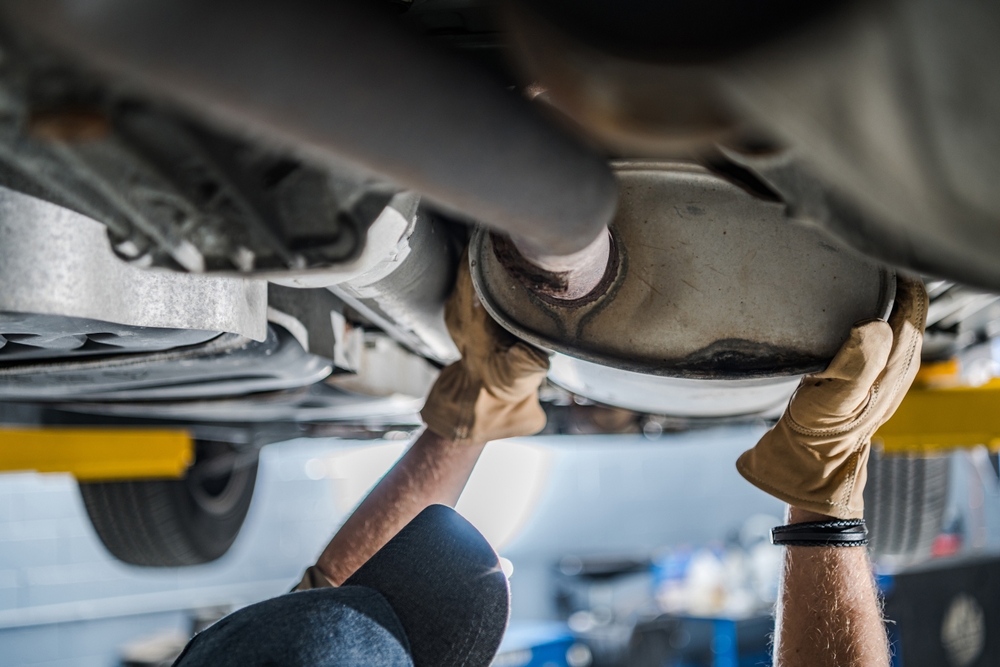
Maintaining Your Catalytic Converter to Ensure Compliance in California
If you drive in California, keeping your catalytic converter in top condition is more than just smart vehicle care—it’s the law. A California-approved catalytic converter is specifically designed to meet the strict guidelines set by the California Air Resources Board (CARB). These converters help reduce harmful emissions, protect air quality, and ensure your vehicle passes mandatory inspections. Failing to maintain your converter can lead to costly fines, failed smog checks, and even legal penalties, so taking a proactive approach is essential for both compliance and performance.
CARB Compliance and California Emissions Standards
California enforces some of the strictest emissions standards in the U.S., aimed at reducing harmful pollutants like nitrogen oxides, carbon monoxide, and hydrocarbons. To meet these requirements, catalytic converters must be CARB-compliant, meaning they achieve higher efficiency levels than federally approved models. Because of this, not all converters are legal for use in the state.
Understanding California Emissions Laws
State law requires that any replacement catalytic converter be CARB-certified and clearly labeled. Installing a non-compliant unit—even one approved under federal EPA standards—is illegal. Converters must also match the exact year, make, and model of your vehicle and be installed by a licensed professional. Regular smog testing enforces compliance, and failing to meet standards means replacing the converter before the vehicle can be registered or legally operated.
Catalytic Converter Maintenance Essentials
Although converters are built to last for many years, they can fail prematurely without proper care. Preventive maintenance is essential for maximizing performance and staying compliant with emissions laws.
Oil Changes, Tune-Ups, and Exhaust Checks
- Oil changes prevent harmful contaminants from entering the exhaust system.
- Tune-ups keep engines running efficiently, reducing unburned fuel that could overheat the converter.
- Exhaust inspections detect leaks or cracks that may affect performance and help avoid costly replacements.
Driving Habits to Avoid Catalytic Converter Replacement
Aggressive driving habits shorten converter life. Hard acceleration, sudden braking, and frequent short trips prevent the converter from reaching optimal temperatures, allowing carbon buildup that causes blockages. If the check engine light comes on or performance declines, the issue should be addressed quickly to prevent major damage.
Preventive Measures for Long-Term Performance
Using high-quality fuel helps minimize harmful buildup, while unnecessary fuel additives can damage the converter. Addressing engine problems such as misfires, coolant leaks, or oil contamination promptly is critical, since these issues can push unburned fuel into the converter and cause overheating.
Keep your car compliant and efficient with CARB-approved catalytic converters from HottExhaust. We offer trusted products, expert guidance, and reliable support to keep you road-ready. Avoid costly fines or failed smog checks—shop now at HottExhaust and drive with confidence today.
